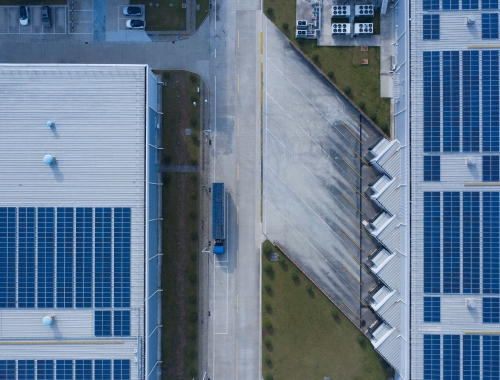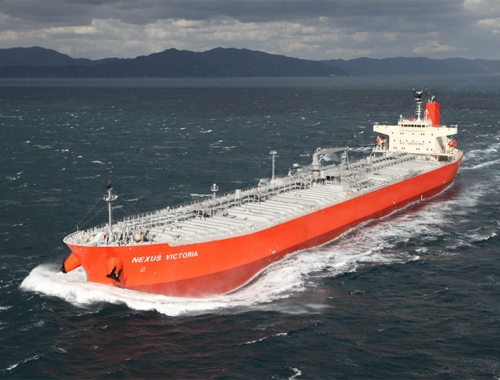China prepares to build out emissions trading scheme
SUMMARY
Beijing's emissions trading scheme is expected to drive the development of gas-fired power generation, set to double in capacity this decade.
By Shi WeijunChina is preparing an ambitious expansion of its existing emissions trading scheme (ETS) to cover more polluting sectors as early as next year, while is seeking to support its development with a voluntary carbon credit market that was shelved more than six years ago but expected to be revived shortly.
The Chinese ETS turned two years old in July after officially launching in 2021. It covered 2,162 coal- and natural gas-fired power companies in the first compliance period that emit 4.5 gigatonnes/year of CO2e – equivalent to more than 40% of China’s total CO2 emissions last year and making it the largest carbon market in the world by volume.
The ETS is a compliance market with some quirks that set it apart from true cap-and-trade schemes in the EU, New Zealand, South Korea and California. China’s ETS does not impose a fixed cap on each power plant’s emissions – instead each power plant is allocated a number of free permits known as China Emission Allowances (CEAs) based on a complex formula that takes output and CO2 emissions intensity into account.
At the end of a compliance cycle – typically a calendar year – the plant surrenders the number of CEAs equal to its verified emissions. If a plant’s emissions intensity is higher than its prescribed emissions intensity benchmark, it will not have enough CEAs to cover its emissions and have to buy some to cover the deficit.
If a plant’s emissions intensity is below its benchmark, then it will surrender the number of CEAs corresponding to its verified emissions and can sell or potentially bank the surplus. While CEAs are presently allocated for free, the introduction of auctions for trading CEAs is a possibility, Yang Weihui, Gansu carbon credit scheme expert and a consultant at the Asian Development Bank, said at the Asia-Pacific Forum on Green and Low-Carbon Development in Changsha on October 20.
Gas-fired power in the money
The ETS has been partially designed to encourage the development of gas-fired power generation in China. A small number of gas-fired power sites are covered under the current compliance phase of the ETS, which requires all participants to cover their 2021-2022 emissions by the end of this year.
But unlike their coal-burning counterparts, gas-fired plants do not have to purchase CEAs if they have a deficit. This effectively means gas-fired plants are sellers only – they may be able to sell excess CEAs if they come under their benchmark but would never need to buy for themselves if they go over. This setup acts as an indirect subsidy for gas plants as they can earn additional revenues from carbon trading, an intentional design to encourage coal-to-gas switching.
The ETS could be a key driver for greater gas-to-power buildout in China, which will more than double in capacity this decade to help the country peak its carbon emissions before 2030, according to the International Gas Union’s annual Global Gas Report released on October 19.
China’s gas-fired power generation is expected to increase alongside renewable energy generation, from 300 TWh last year to 600 TWh in 2030 and 800 TWh in 2040, the report predicted.
The ETS introduced a national carbon price in China but the next step will be to include more heavy emitters. “After the national carbon market system mechanism is mature, other key emission industries such as steel, cement and electrolytic aluminium will be introduced,” said Yang. “While promoting market expansion, more key emission sources will be included in the national carbon market control, gradually increasing the proportion of emission sources covered by the national carbon market to over 50% of China’s overall carbon emission scale.”
There is speculation that the Ministry of Ecology and Environment (MEE), which is responsible for tackling climate change and emission reductions, is looking to expand the ETS beyond power generation to other polluting sectors as early as next year. By the end of this decade Beijing plans to expand trading to cover 70% of national emissions.
NOCs exploring carbon market
While China’s ETS is not expected to cover the oil and gas sector for the foreseeable future, PetroChina, Sinopec and CNOOC have still been impacted as some captive power plants operated by their subsidiaries have been drafted into the current phase. These facilities directly serve commercial and industrial sites such as refineries and petrochemical plants.
Seventeen subsidiaries of Sinopec, China’s largest refiner and second-largest onshore gas producer, had their captive power plants included in the ETS – among which Sinopec Shengli Oilfield, Sinopec Maoming Petrochemical, Sinopec Shanghai Petrochemical and ZTHC Energy participated in the first day of carbon trading.
Sinopec itself closed the first bulk transaction on the ETS in July 2021 with a purchase of 100,000 t of carbon credits from conglomerate China Resources Group to offset emissions from its own power plants.
More recently in mid-October the global trading arm of PetroChina said it won the first physically traded Japanese carbon credits transacted on the Tokyo Stock Exchange’s new carbon trading platform. The trading arm’s Japanese branch received confirmation from the operator of the stock exchange that it had executed the first set of trades. The announcement underlined the willingness of China’s NOCs to participate in carbon markets outside their home turf.
Getting comfortable with carbon markets will be important for both the NOCs’ decarbonisation and business. The companies are already seasoned traders in the LNG space after familiarising themselves with trading strategies last decade and now transact both physical LNG cargoes as well as LNG derivatives. Carbon will simply be an additional commodity in their increasingly expanding trading footprint.
China will also Increase the proportion of allowances allocated by auction, according to Yang. “Based on the experience of the pilot auction market and the EU carbon market, it can be considered to gradually increase the proportion of allowance auction, and use the auction proceeds to support the development of green and low-carbon industries, forming a green funding loop.”
Offsets market primed for comeback
China has also signalled it is preparing to relaunch its voluntary offsets programme more than six years after shelving the scheme. The Chinese Certified Emission Reduction (CCER) scheme launched in 2012 and saw 1,047 projects registered in 2013-2017, nearly three-quarters of which were solar, wind, hydropower and rural biogas utilisation. Of the total, 287 projects were approved to issue CCERs.
But the National Development and Reform Commission (NDRC), China’s top economic planner, paused registration of new projects in March 2017 due to thin trading and a lack of standards in carbon audits. There were more than 200 methodologies for generating CCERs when the scheme was suspended, some of which were not rigorous. Existing credits are still available to trade, though most information on the CCER trading platform has not been updated since 2021.
CCERs are seen as an important supplementary component to China’s ETS because under current rules, polluters can use voluntary credits to offset as much as 5% of their emissions if they have not secured enough CEAs from the ETS. Demand for CCER credits could reach 350–400mn t/yr as a result.
All three of China’s NOCs have forayed into activities that could be eligible for CCERs eventually. PetroChina is scaling up investment in geothermal, solar and wind, and carbon capture, storage and utilisation (CCUS). CNOOC is deepening its offshore wind involvement, while Sinopec is diving into hydrogen, electric vehicle charging, and scaling up its CCUS efforts.
“CCERs serve two purposes. One is to reduce the cost of compliance for enterprises regulated under the ETS and at the same time provide incentives for green and low-carbon technology through the establishment of a quasi-carbon offset market,” Qi Jiuhong, assistant to the general manager of the China Beijing Green Exchange (CBGE), said at the forum in Changsha.
A revival of the CCER scheme now looks imminent. October saw a flurry of announcements from the MEE, which took over the NDRC’s responsibilities for China’s climate change and emissions reductions, including management of CCERs, five years ago.
On October 19, the MEE published interim trading management rules for a voluntary emissions reduction scheme covering greenhouse gases. The new long-awaited rules replaced the old regulation released by the NDRC and marked a major step towards the full relaunch of China’s moribund CCER market.
Five days later on October 24 the MEE published methodologies that will be used to quantify net emission reductions or removals for four types of projects: afforestation, solar thermal power, offshore wind power and mangrove restoration.
The MEE confirmed the next day that the National Center for Climate Change Strategy and International Cooperation will operate and manage CCER registrations while the CBGE will handle trading. The CBGE said as early as February that the national registration and trading systems for CCERs were complete and ready for further action.
Industry experts have said the publication of just four methodologies ahead of the relaunch of the CCER programme suggests the MEE is screening out project types with poor economic returns. Limiting project types would help prevent the creation of credit supply surplus that would potentially dampen prices and hinder the CCER’s primary objective of curbing emissions.
The rapid fire of policy updates has satisfied key conditions for relaunching the CCER programme. State media have reported the MEE will hold a launch ceremony for the official national CCER trading platform in early November.








